Roger Harmon, drawn by Marva Gradwohl
Gravestone fragment HMB 1939.477, Historisches Museum Basel
Kolorierte SFM-Aufnahme vom Grabstein
«Another inch, and our questions would be answered.»
Roger Harmon on Basel’s Medieval Date-Stone
Roger Harmon, a specialist in Hebrew inscriptions, recently brought to the Jewish Museum’s attention a fragment of a Basel tombstone with a questionable date, which will be on display in the Jewish Museum’s permanent exhibition starting 3. September 2023. Museum director Naomi Lubrich spoke with Roger Harmon about his re-discovery of the stone, about Basel’s place in medieval Ashkenaz and about the intricacies of Hebrew dating.
Naomi Lubrich: Dear Roger, a tombstone fragment recently resurfaced after having been forgotten for a long time. Can you tell us about it?
Roger Harmon: Gladly! It is a stone fragment with a Hebrew inscription. It was found in 1937 and deciphered that very year. The stone was then transferred to the depot of the Historical Museum in Basel, where it received the inventory number 1939.774. It has slumbered in storage ever since. I had read about this stone and its date but had never been able to see it. Recently, Simon Erlanger (Jewish Studies, University of Lucerne) sent me an old black-and-white photo in which the stone is in sharp focus. Having seen the image, I believe the date needs to be re-assessed.
NL: How do you read the inscription?
RH: That’s a question of interpretation. The stone has five letters: תסד לפ. Two are numbers, (סד) and two are letters (לפ), the character on the right – tav (ת)? – breaks off on one side. As you know, Hebrew uses letters for numbers. Undisputed are סד (64) and the abbreviation לפ[“ק] (lif[rat katan], small count). It is more complicated with the tav (ת). Is it a number (400) or a letter (t)? If it is a letter, it belongs to the word שנת (shenat, year). Then the year would be [50]64, or according to the Gregorian calendar: 1303/4. If, on the other hand, the tav is a number, the year would be ת’]ת’ס’ד’] ie [4]864, or according to the Gregorian calendar: 1103/4. Or has there been damage to the stone, and the letter is not a tav (ת) but a khet (ח)? In that case, you’d need to reconsider what the date would be.
NL: So the riddle remains unsolved?
RH: Yes. Another inch, and our questions would be answered.
NL: Where was the stone found, and how did it survive?
RH: The stone came from the medieval Jewish cemetery in Basel near Petersplatz. The community had been expelled, the remaining Jews murdered, and the cemetery vandalised on January 16, 1349. After the massacre, the intact stones were repurposed as building material, while the broken stones and other fragments were left on the ground.
NL: …so the stone was one of the fragments remaining on the cemetery. How was it found?
RH: In the 1930s, the university of Basel built a Kollegienhaus on the grounds of the cemetery. During the construction, 28 broken gravestones and other fragments were unearthed. In 1937, they were entrusted to the Historical Museum of Basel. On July 10, 1939, on the occasion of the inauguration of the Kollegienhaus, the rabbi, Dr. Arthur Weill, presented the University with a hand-written certificate bearing translations of the fragmentary epitaphs. Today, five of the 28 gravestones and fragments are displayed in the courtyard of the Jewish Museum, while the others are in storage at the Historical Museum of Basel.
NL: How has the Date-Stone been read so far?
RH: Rabbi Weill read the tav as a number and dated the stone to the year 1103/4. But in 1962, the historian Zvi Avnéri read the tav as a letter and dated the stone to the year 1303/4, which became communis opinio (see Ginsburger 1968 and Meyer 2005). Thereafter, Rabbi Weill’s date, 1103/4, and the Date-Stone itself, were forgotten.
NL: From your point of view, what speaks for 1103/4?
RH: Both dates are possible. What speaks against tav as a letter is the missing space between it and the following samech (ס). The space between the dalet (ד) and lapak (לפ[“ק]), on the other hand, is clear. In the other Basel inscriptions, the space between words as well as between words and numbers is clearly visible. In the other Basel inscriptions, with just one exception, the space between words as well as between words and numbers is clearly visible. So the missing space speaks for 1103/4.
NL: And what speaks against it?
RH: What speaks against the tav as a number is the fact that we have no other inscriptions from the 12th century. The fragment would be an outlier. But, as the saying goes, a lack of evidence is not evidence of a lack.
NL: What does the stone mean for our knowledge of Basel’s medieval Jewish community?
RH: Assuming the early date, 1103/4, the stone would testify to the existence of a Jewish community in Basel contemporary with the famous scholar Rashi, the Basel community would be contemporary with early Jewish communities on the Rhine from Strasbourg to Cologne. The spiritual center of German-speaking Jewry was Speyer, Worms and Mainz. Today, their pre-eminence is recognized by the UNESCO (World Heritage site). Their spiritual pre-eminence is celebrated today as a site of world heritage. With the early date, the Basel Jews would have been part of the formative communities of Ashkenazi Jewry. And the date would hark back to another reference to an early Basel community:A memorial book lost in Rotterdam in 1940, referred to a Basel yeshiva (school) destroyed at the time of the First Crusade in 1096.
NL: So what are your next steps for researching the stone?
RH: There is a lot of work to do on the Basel gravestones. It would be useful to have a typology of the lettering of all Basel inscriptions. Then we could see if the writing of the inscription matches that of any other Basel stone, hopefully one bearing a date. Another possibility would be to compare the writing of the Basel epitaphs, in particular that of the Date-Stone, with the writing of the Worms epitaphs in the hope of establishing a Basel timeline. Also, we should see whether we can find any further evidence of the lost Rotterdam memorial book and look for other references to an early Basel yeshiva. Clues could be widely scattered. Besides the Basel gravestones, my personal focus of work is Alsace. There, six Jewish cemeteries have been documented, the inscriptions digitized and translated. I am preparing for press two documentations, one on Durmenach and the other on Thann. Two other cemetery projects, one of them in Switzerland, are in progress. A genizah in Hégenheim, has surfaced. So there is work to be done there as well.
NL: Dear Roger, in that case, I won’t keep you from your work. Thank you very much for the interview!
Sources:
Cornelia Adler and Christoph Matt, Der mittelalterliche Friedhof der ersten jüdischen Gemeinde in Basel, Basel 2010, p 27.
Zvi Avnéri, «Nouvelles inscriptions tumulaires du premier cimetière de Bâle», in: Revue des études juives 121, 1962, p 181–193, here p 186–187 and 191, n 11 (with a typo, קד for recte סד).
Moïse Ginsburger, «Basel», in: Germania Judaica 2, edited by Zvi Avnéri, Tübingen 1968, pp 51–55, here p 54 note 12.
Werner Meyer, «Benötigt, geduldet, verachtet und verfolgt. Zur Geschichte der Juden in Basel zwischen 1200 und 1800», in: Acht Jahrhunderte Juden in Basel, edited by Heiko Haumann, Basel 2005, p 13–56, here: p 17 note 7.
verfasst am 14.08.2023
© Illustration: Marva Gradwohl
© Abb.1: Nicolas Gebhart
© Abb.2: Archäologische Bodenforschung Basel-Stadt, Benedikt Wyss, Martin Allemann

Florian Lippke on Religious Concepts of Time




